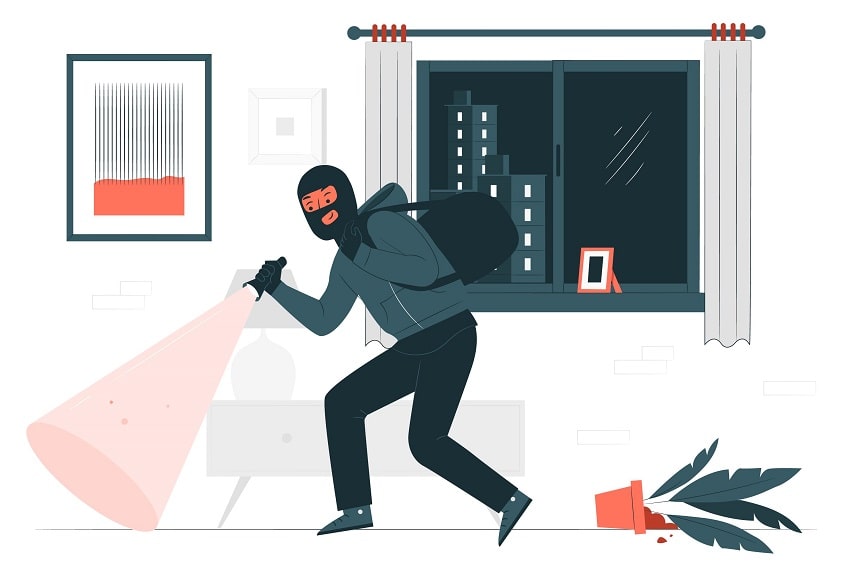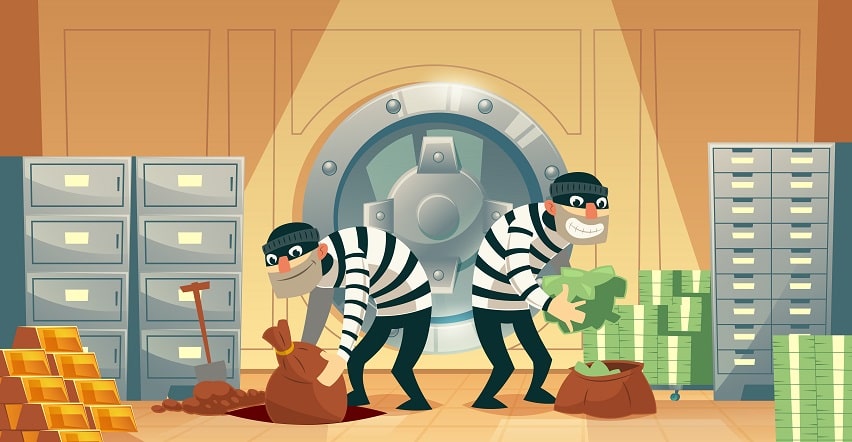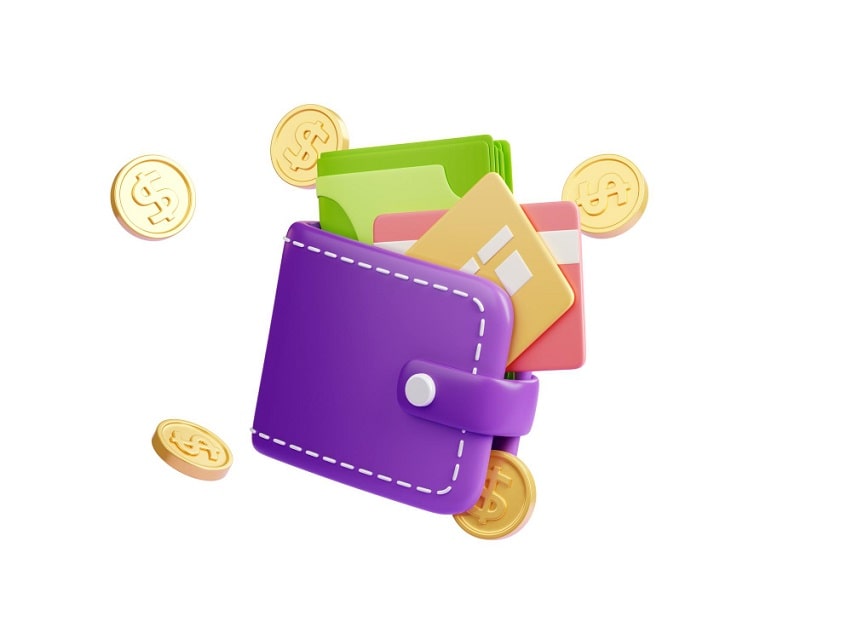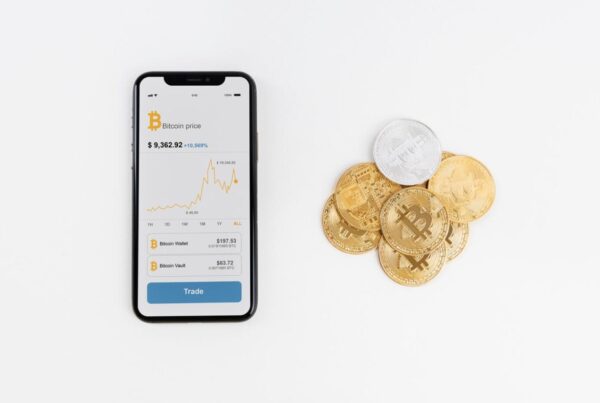Imagine waking up one morning energized and motivated to check your crypto portfolio, only to discover that someone had stolen your cryptocurrency. You feel the panic rising in your chest and desperately want to know how to recover stolen cryptocurrency. You’re now on the web, desperately looking for practical tips on how to recover stolen cryptocurrency.
You come across tons of information, but none is comprehensive or up-to-date. Fortunately, we’ve done all the hard work for you and compiled a comprehensive guide on how to recover stolen cryptocurrency. Read on!
Is it Possible to Recover Stolen Cryptocurrency?
Let’s start with the bad news. According to an analysis by the Wall Street Journal, A fifth of Bitcoin is lost and is never recovered. This means that if you’re the victim of cryptocurrency theft, the chances of getting your lost funds back are slim.
But why is lost cryptocurrency so hard to recover?
The decentralized and anonymous nature of cryptocurrency networks makes it impossible to track stolen coins. Transactions are done on the blockchain, which is a digital public ledger that records all cryptocurrency transactions permanently on the network, so once a transaction has been made, it’s almost impossible to trace where it went.
Also, it’s worth noting that cryptos have no built-in consumer protection. Consumer protection is a law that provides financial compensation for customers if their funds are stolen or misused. For instance, if you report suspicious activity on your credit or debit card, the bank will investigate and refund you if necessary.
Unfortunately, such protection doesn’t exist in cryptocurrency transactions yet. This is mainly due to the decentralized nature of cryptocurrencies. With no central authority or any form of security, it’s more difficult for victims to get their funds back.
Another reason why it’s hard to recover stolen cryptocurrency is that criminals can use various methods to hide their tracks. They can mix coins, send them through multiple wallets, or even exchange them for another form of currency. All these processes make it extremely hard to find the origin and destination of a transaction.
Understanding Cryptocurrency Theft
According to recent data, cryptocurrency theft instances rose from nine in 2017 to 190 in 2022. The same data shows that in August 2021 alone, over $726.44 million worth of cryptocurrencies was stolen from exchanges. It’s projected that cryptocurrency theft will continue to grow in the coming years, which makes it essential for crypto holders and traders to understand what cryptocurrency theft is and how to recover stolen cryptocurrencies.
Cryptocurrency theft occurs when a hacker or an attacker steals digital assets such as Bitcoin, Ethereum, Litecoin, and other altcoins from cryptocurrency exchanges, wallets, users’ devices, and other related services.
There’re several sophisticated techniques attackers use to gain access to digital assets. They include:
- Phishing attacks: This is when a hacker uses malicious emails and websites to deceive users into entering their private information. Once hackers gain access, they can easily steal users’ digital assets.
- Malware attacks: In this attack, cybercriminals use malware such as Trojans, Ransomware, and other malicious software to access user accounts. They can also use malware to track victims’ activities, allowing them to steal more digital assets.
- Man-in-the-middle (MitM) attacks: This is when an attacker intercepts communications between two parties and gains access to private information, including digital funds. Once they gain access, they can use this information to steal digital assets.
- Social engineering schemes: These attackers use psychological techniques to manipulate users into revealing their private information. They can also use this information to gain access to digital assets.
- Cryptojacking: This is when a hacker hijacks victims’ devices and uses them to mine cryptocurrency. They can also use these hijacked devices to send digital assets directly to their wallets without the users knowing.
- Info theft: This attack occurs when a hacker steals your crypto wallet’s private key or other sensitive information, such as login credentials. They can then use this information to gain access to your digital funds.
All these methods are used by attackers to gain access to digital assets. Therefore, it’s essential for crypto holders and traders to be aware of these techniques and take measures to prevent them from occurring.
Reporting Cryptocurrency Scam
Even though authorities can’t do much to help you recover stolen digital assets, they can investigate and prosecute scammers as a way of deterring future cryptocurrency theft.
To report cryptocurrency thefts, users need to provide the following information:
- The date of the incident
- A description of what happened
- Evidence that proves that the theft occurred, such as screenshots or emails
- The value of the digital assets stolen
- Personal information, such as name, address, and contact details
This information will be used by the authorities to investigate and prosecute criminals. The more detailed the information is, the better the chances of the authorities being able to prosecute.
Apart from reporting to the authorities, there’re a few other things you should do to recover stolen cryptocurrency. They include:
Contact Your Exchange
Your exchange may have a higher chance of helping recover stolen cryptocurrency recovery than the authorities. Exchanges will be able to investigate the theft and attempt to recover stolen digital assets.
Hire a Cryptohunter
A crypto hunter is a professional who specializes in recovering stolen digital assets. They use sophisticated software and methods to track down the assailants and attempt to recover lost crypto funds. This includes ethical hacking, forensic analysis, and other investigative methods.
How To Prevent Your Cryptocurrency from Being Stolen
There’re several measures you can take to protect your cryptocurrency from theft. Here are a few tips on how to recover stolen cryptocurrency:
1. Use Strong Passwords
Hackers and cybercriminals often target users who use weak passwords or reuse the same password for multiple accounts. To safeguard your cryptocurrency, make sure to create strong, unique passwords for all of your online accounts. Avoid using common words and phrases and personal information like your birthday or address. Additionally, use a combination of letters, numbers, symbols, and upper and lowercase characters to ensure your password is as secure as possible.
2. Use Two-Factor Authentication (2FA)
Two-factor authentication is a security feature that adds an extra layer of protection to your account login process. When enabled, it requires you to input not only your standard password but also an additional code, usually sent via SMS to your mobile phone. This ensures that even if a hacker were to gain access to your account, they would still need the 2FA code in order to log in.
3. Store Cryptocurrency In A Hardware Wallet
When storing cryptocurrency, it is best practice to store it in an offline wallet or hardware wallet. These types of wallets store your private keys in an offline environment, making them inaccessible to hackers. Additionally, hardware wallets often come with a backup seed phrase that can be used if you need to recover access to your funds.
4. Don’t Talk Publicly About Your Cryptocurrency
Though you may be proud of your cryptocurrency investments, it is best practice not to talk about them publicly. The more people who know about the size and location of your assets, the more likely it is to attract unwanted attention from malicious actors. If you must mention your investments or holdings, do so in a secure environment with trusted people only.
5. Spread Your Investments Across Multiple Wallets
Another way to protect your cryptocurrency is to spread your investments across multiple wallets. This will help reduce the risk of loss and give you a wider range of options if one wallet were to be compromised. Additionally, it is best practice to use different passwords for each wallet and ensure that all of them are stored securely offline.
Which Crypto Wallets Are Most Secure?
The most secure wallets come with features that help protect your crypto from theft. These include two-factor authentication, multi-signature wallets, and hierarchical deterministic (HD) wallets.
Apart from these features, the best wallets, such as Tezro, are non-custodial, meaning you are the only one who holds the private keys. This is important because it means that no third-party – not even Tezro – can access your funds without your permission.
The security environment of a wallet is also key. You should look for wallets with advanced protocol layers that are designed to protect your data and assets from malicious actors such as hackers, phishers, and scammers.
Can You Get Legal Help for Stolen Cryptocurrency?
This depends on the jurisdiction and the type of legal help you require. If a crime such as fraud, theft, or money laundering has taken place then you may be able to report it to the police and get legal assistance in recovering your funds. Generally speaking, many government agencies don’t have the capacity to handle cryptocurrency-related cases due to its complex nature, so you may have to seek out private legal counsel if you need to pursue a civil lawsuit.
Ensure you find a good solicitor with knowledge of the cryptocurrency space and its rules. They will be able to advise you on the best course of action, such as filing a police report or bringing a civil suit against an individual or company. If successful, this could result in getting your funds back or receiving damages from the perpetrator.
Frequently Asked Questions
Can You Sue For Crypto Theft?
If the jurisdiction you are in is crypto-friendly, and there’re laws that recognize digital currency, then it is possible to sue for crypto theft. If the laws in your jurisdiction do not provide legal protection for digital currencies, then suing may not be an option. Understand your local laws and seek legal advice before embarking on the path to sue for stolen crypto.
Can A Crypto Scammer Be Traced?
Yes! You can hire a cryptohunter to trace the scammer. Cryptohunters are individuals or companies specializing in tracing stolen crypto funds and identifying the scammer/hacker who stole them. They use advanced tools such as blockchain analysis, data scraping, and forensic investigations to locate scammers and recover your stolen digital assets.
How Much Money Is Lost To Crypto Crimes?
A record of $3.8 billion was stolen in 2022 alone. This is just the reported amount. The real number is thought to be much higher as many crypto thefts and scams go unreported.
Key Takeaways
- Once your virtual currency has been stolen it is incredibly unlikely that you will be able to recover it.
- However, there are companies like cryptohunters that offer services to recover stolen crypto.
- If your country or state has legislation on cryptocurrencies the state might provide legal protection for digital currencies.
- Avoid getting into websites and downloading crypto apps that you don’t know completely.
Final Thoughts
Understanding how to recover stolen Bitcoins is among the most crucial knowledge a crypto investor must have. Using the right resources and recognizing phishing tactics can increase your chances of successfully recovering stolen cryptocurrency without putting yourself at further risk.
Since recovering stolen crypto is an uphill task, ensure you protect your assets to the best of your ability. Investing in a secure wallet, using two-factor authentication, and monitoring all your accounts closely is the first step in ensuring that no one can access your funds without authorization.
Download Tezro app to keep your crypto completely safe and also have encrypted messages with your contacts.















